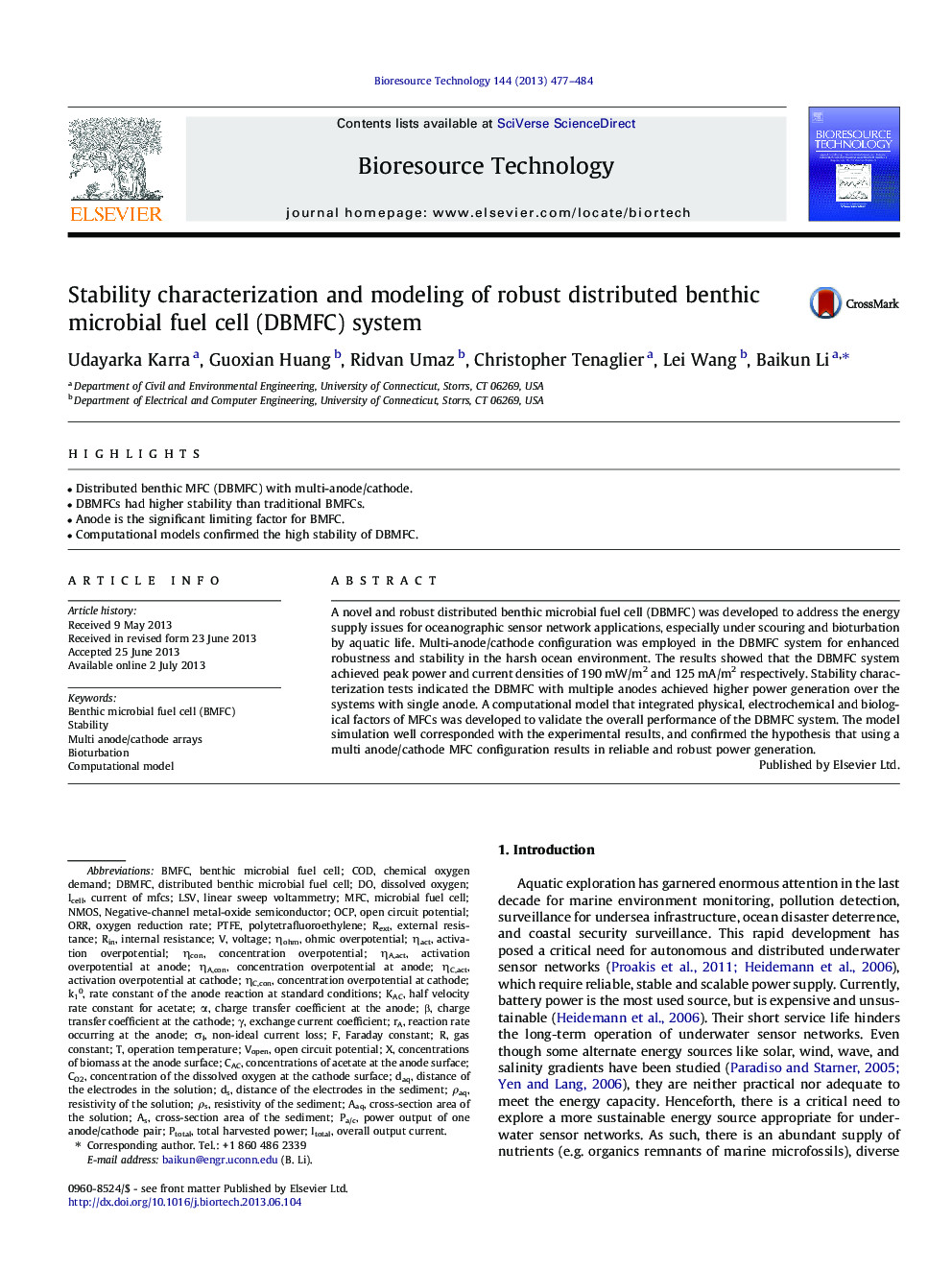| Article ID | Journal | Published Year | Pages | File Type |
|---|---|---|---|---|
| 7081544 | Bioresource Technology | 2013 | 8 Pages |
Abstract
A novel and robust distributed benthic microbial fuel cell (DBMFC) was developed to address the energy supply issues for oceanographic sensor network applications, especially under scouring and bioturbation by aquatic life. Multi-anode/cathode configuration was employed in the DBMFC system for enhanced robustness and stability in the harsh ocean environment. The results showed that the DBMFC system achieved peak power and current densities of 190Â mW/m2 and 125Â mA/m2 respectively. Stability characterization tests indicated the DBMFC with multiple anodes achieved higher power generation over the systems with single anode. A computational model that integrated physical, electrochemical and biological factors of MFCs was developed to validate the overall performance of the DBMFC system. The model simulation well corresponded with the experimental results, and confirmed the hypothesis that using a multi anode/cathode MFC configuration results in reliable and robust power generation.
Keywords
K10DAQBenthic microbial fuel cellAAQPtotalLSVNMOsρsCACMFCOCPORRPTFEdissolved oxygenchemical oxygen demandgas constantStabilityOperation temperatureRINBioturbationMicrobial fuel cellConcentration overpotentialFaraday constantActivation overpotentialComputational modelExternal resistanceInternal resistancevoltageLinear sweep voltammetryOpen circuit potentialpolytetrafluoroethyleneCodKacCO2
Related Topics
Physical Sciences and Engineering
Chemical Engineering
Process Chemistry and Technology
Authors
Udayarka Karra, Guoxian Huang, Ridvan Umaz, Christopher Tenaglier, Lei Wang, Baikun Li,
